Publications
2020
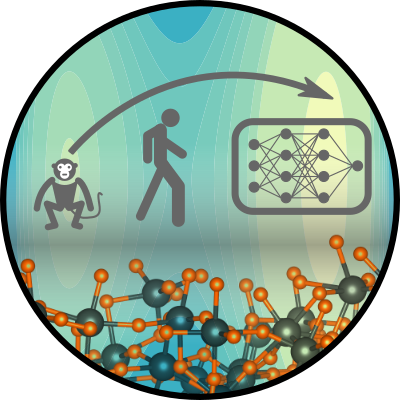
van Roekeghem, Ambroise; Carrete, Jesús; Curtarolo, Stefano; Mingo, Natalio
Journal ArticleIn: Physical Review Materials, vol. 4, no. 11, pp. 113804, 2020.
Abstract | Links | BibTeX | Tags: P09, pre-TACO
@article{Roekeghem2020,
title = {High-throughput study of the static dielectric constant at high temperatures in oxide and fluoride cubic perovskites},
author = {Ambroise van Roekeghem and Jesús Carrete and Stefano Curtarolo and Natalio Mingo},
doi = {10.1103/physrevmaterials.4.113804},
year = {2020},
date = {2020-11-13},
journal = {Physical Review Materials},
volume = {4},
number = {11},
pages = {113804},
publisher = {American Physical Society (APS)},
abstract = {Using finite-temperature phonon calculations and the Lyddane-Sachs-Teller relations, we calculate ab initio the static dielectric constants of 78 semiconducting oxides and fluorides with cubic perovskite structures at 1000 K. We first compare our method with experimental measurements, and we find that it succeeds in describing the temperature dependence and the relative ordering of the static dielectric constant ε_{DC} in the series of oxides BaTiO_{3}, SrTiO_{3}, KTaO_{3}. We show that the effects of anharmonicity on the ion-clamped dielectric constant, on Born charges, and on phonon lifetimes, can be neglected in the framework of our high-throughput study. Based on the high-temperature phonon spectra, we find that the dispersion of ε_{DC} is one order of magnitude larger among oxides than fluorides at 1000 K. We display the correlograms of the dielectric constants with simple structural descriptors, and we point out that ε_{DC} is actually well correlated with the infinite-frequency dielectric constant ε_{∞}, even in those materials with phase transitions in which ε_{DC} is strongly temperature dependent.},
keywords = {P09, pre-TACO},
pubstate = {published},
tppubtype = {article}
}
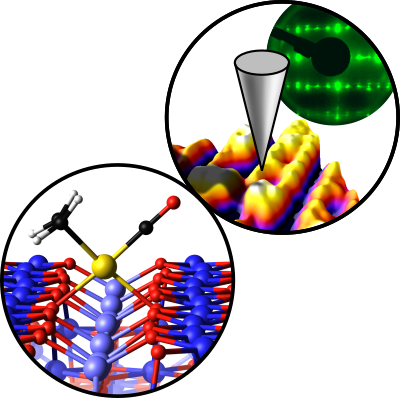
Timmermann, Jakob; Kraushofer, Florian; Resch, Nikolaus; Li, Peigang; Wang, Yu; Mao, Zhiqiang; Riva, Michele; Lee, Yonghyuk; Staacke, Carsten; Schmid, Michael; Scheurer, Christoph; Parkinson, Gareth S.; Diebold, Ulrike; Reuter, Karsten
IrO2 Surface Complexions Identified through Machine Learning and Surface Investigations
Journal ArticleIn: Physical Review Letters, vol. 125, no. 20, pp. 206101, 2020.
Abstract | Links | BibTeX | Tags: P02, P04, pre-TACO
@article{Timmermann2020,
title = {IrO_{2} Surface Complexions Identified through Machine Learning and Surface Investigations},
author = {Jakob Timmermann and Florian Kraushofer and Nikolaus Resch and Peigang Li and Yu Wang and Zhiqiang Mao and Michele Riva and Yonghyuk Lee and Carsten Staacke and Michael Schmid and Christoph Scheurer and Gareth S. Parkinson and Ulrike Diebold and Karsten Reuter},
doi = {10.1103/physrevlett.125.206101},
year = {2020},
date = {2020-11-10},
urldate = {2020-11-10},
journal = {Physical Review Letters},
volume = {125},
number = {20},
pages = {206101},
publisher = {American Physical Society (APS)},
abstract = {A Gaussian approximation potential was trained using density-functional theory data to enable a global geometry optimization of low-index rutile IrO_{2} facets through simulated annealing. Ab initio thermodynamics identifies (101) and (111) (1×1) terminations competitive with (110) in reducing environments. Experiments on single crystals find that (101) facets dominate and exhibit the theoretically predicted (1×1) periodicity and x-ray photoelectron spectroscopy core-level shifts. The obtained structures are analogous to the complexions discussed in the context of ceramic battery materials.},
keywords = {P02, P04, pre-TACO},
pubstate = {published},
tppubtype = {article}
}
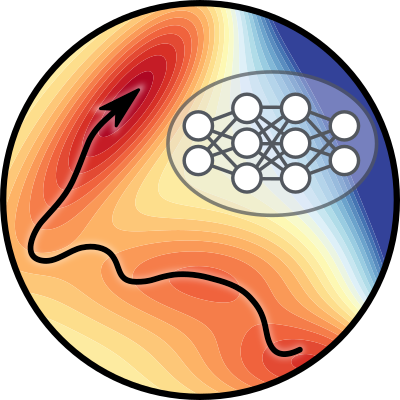
Wohlfahrt, Oliver; Dellago, Christoph; Sega, Marcello
Journal ArticleOpen AccessIn: The Journal of Chemical Physics, vol. 153, no. 14, pp. 144710, 2020.
Abstract | Links | BibTeX | Tags: P12, pre-TACO
@article{Wohlfahrt2020,
title = {Ab initio structure and thermodynamics of the RPBE-D3 water/vapor interface by neural-network molecular dynamics},
author = {Oliver Wohlfahrt and Christoph Dellago and Marcello Sega},
doi = {10.1063/5.0021852},
year = {2020},
date = {2020-10-14},
urldate = {2020-10-14},
journal = {The Journal of Chemical Physics},
volume = {153},
number = {14},
pages = {144710},
publisher = {AIP Publishing},
abstract = {Aided by a neural network representation of the density functional theory potential energy landscape of water in the Revised Perdew–Burke–Ernzerhof approximation corrected for dispersion, we calculate several structural and thermodynamic properties of its liquid/vapor interface. The neural network speed allows us to bridge the size and time scale gaps required to sample the properties of water along its liquid/vapor coexistence line with unprecedented precision.},
keywords = {P12, pre-TACO},
pubstate = {published},
tppubtype = {article}
}
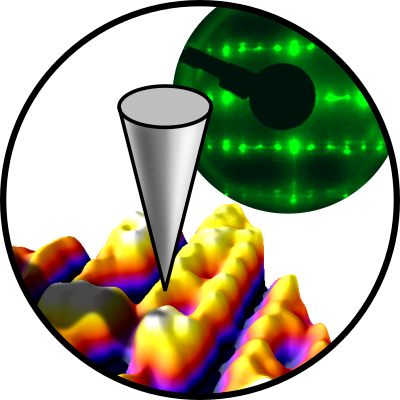
Franceschi, Giada; Schmid, Michael; Diebold, Ulrike; Riva, Michele
Atomically resolved surface phases of La0.8Sr0.2MnO3(110) thin films
Journal ArticleOpen AccessIn: Journal of Materials Chemistry A, vol. 8, no. 43, pp. 22947–22961, 2020.
Abstract | Links | BibTeX | Tags: P02, pre-TACO
@article{Franceschi2020,
title = {Atomically resolved surface phases of La_{0.8}Sr_{0.2}MnO_{3}(110) thin films},
author = {Giada Franceschi and Michael Schmid and Ulrike Diebold and Michele Riva},
doi = {10.1039/d0ta07032g},
year = {2020},
date = {2020-09-04},
urldate = {2020-09-04},
journal = {Journal of Materials Chemistry A},
volume = {8},
number = {43},
pages = {22947--22961},
publisher = {Royal Society of Chemistry (RSC)},
abstract = {The atomic-scale properties of lanthanum–strontium manganite (La_{1-x}Sr_{x}MnO_{3−δ}, LSMO) surfaces are of high interest because of the roles of the material as a prototypical complex oxide, in the fabrication of spintronic devices and in catalytic applications. This work combines pulsed laser deposition (PLD) with atomically resolved scanning tunneling microscopy (STM) and surface analysis techniques (low-energy electron diffraction – LEED, X-ray photoelectron spectroscopy – XPS, and low-energy He^{+} ion scattering – LEIS) to assess the atomic properties of La_{0.8}Sr_{0.2}MnO_{3}(110) surfaces and their dependence on the surface composition. Epitaxial films with 130 nm thickness were grown on Nb-doped SrTiO_{3}(110) and their near-surface stoichiometry was adjusted by depositing La and Mn in sub-monolayer amounts, quantified with a movable quartz-crystal microbalance. The resulting surfaces were equilibrated at 700 °C under 0.2 mbar O_{2}, i.e., under conditions that bridge the gap between ultra-high vacuum and the operating conditions of high-temperature solid-oxide fuel cells, where LSMO is used as the cathode. The atomic details of various composition-related surface phases have been unveiled. The phases are characterized by distinct structural and electronic properties and vary in their ability to ccommodate deposited cations.},
keywords = {P02, pre-TACO},
pubstate = {published},
tppubtype = {article}
}
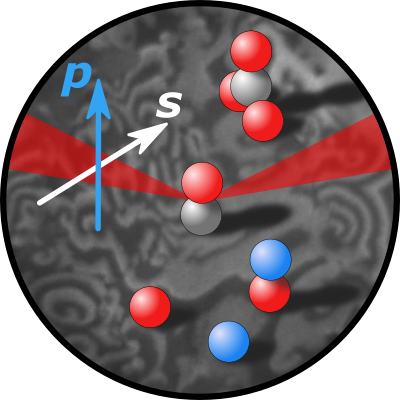
Yang, Jingxia; Ding, Huihui; Wang, Jinjie; Yigit, Nevzat; Xu, Jingli; Rupprechter, Günther; Zhang, Min; Li, Zhiquan
Energy-Guided Shape Control Towards Highly Active CeO2
Journal ArticleIn: Topics in Catalysis, vol. 63, no. 19-20, pp. 1743–1753, 2020.
Abstract | Links | BibTeX | Tags: P08, pre-TACO
@article{Yang2020,
title = {Energy-Guided Shape Control Towards Highly Active CeO_{2}},
author = {Jingxia Yang and Huihui Ding and Jinjie Wang and Nevzat Yigit and Jingli Xu and Günther Rupprechter and Min Zhang and Zhiquan Li},
doi = {10.1007/s11244-020-01357-1},
year = {2020},
date = {2020-08-18},
journal = {Topics in Catalysis},
volume = {63},
number = {19-20},
pages = {1743--1753},
publisher = {Springer Science and Business Media LLC},
abstract = {The shape of nanosized CeO_{2}, obtained via polyvinylpyrrolidone (PVP) micelles, was controlled by microwave (MW)-aided synthesis combined with different combinations of energy input/transfer, including ultrasound (US), ultraviolet (UV) and pressure (P). Whereas ceria nanoflakes resulted from standard solvothermal synthesis, CeO_{2} nanoparticles were obtained from MW, MW + US and MW + UV. New CeO_{2} “nanospindles” (with aspect ratio of 2) resulted from MW + US + UV, and nanorods (with aspect ratio of 11) emerged from MW + P. All ceria morphologies, even nanospindles and nanorods, were mesoporous agglomerates of small CeO_{2} nanocrystals (6–8 nm size), but they still exhibited different specific surface area (SSA) and Ce^{3+}/Ce^{4+} ratio. Underlying reasons of how the different synthesis routes affect the ceria morphology are discussed. Among the six types, CeO_{2} nanorods (MW + P) exhibited the highest SSA (196 m^{2} g^{−1}) and the most surface defects (Ce^{3+}: 26.4%), resulting in excellent catalytic performance in imine synthesis and CO oxidation.},
keywords = {P08, pre-TACO},
pubstate = {published},
tppubtype = {article}
}
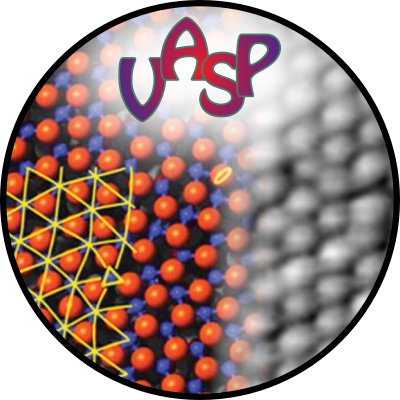
Jinnouchi, Ryosuke; Miwa, Kazutoshi; Karsai, Ferenc; Kresse, Georg; Asahi, Ryoji
On-the-Fly Active Learning of Interatomic Potentials for Large-Scale Atomistic Simulations
Journal ArticleIn: The Journal of Physical Chemistry Letters, vol. 11, no. 17, pp. 6946–6955, 2020.
Abstract | Links | BibTeX | Tags: P03, pre-TACO
@article{Jinnouchi2020,
title = {On-the-Fly Active Learning of Interatomic Potentials for Large-Scale Atomistic Simulations},
author = {Ryosuke Jinnouchi and Kazutoshi Miwa and Ferenc Karsai and Georg Kresse and Ryoji Asahi},
doi = {10.1021/acs.jpclett.0c01061},
year = {2020},
date = {2020-07-31},
journal = {The Journal of Physical Chemistry Letters},
volume = {11},
number = {17},
pages = {6946--6955},
publisher = {American Chemical Society (ACS)},
abstract = {The on-the-fly generation of machine-learning force fields by active-learning schemes attracts a great deal of attention in the community of atomistic simulations. The algorithms allow the machine to self-learn an interatomic potential and construct machine-learned models on the fly during simulations. State-of-the-art query strategies allow the machine to judge whether new structures are out of the training data set or not. Only when the machine judges the necessity of updating the data set with the new structures are first-principles calculations carried out. Otherwise, the yet available machine-learned model is used to update the atomic positions. In this manner, most of the first-principles calculations are bypassed during training, and overall, simulations are accelerated by several orders of magnitude while retaining almost first-principles accuracy. In this Perspective, after describing essential components of the active-learning algorithms, we demonstrate the power of the schemes by presenting recent applications.},
keywords = {P03, pre-TACO},
pubstate = {published},
tppubtype = {article}
}

Grumelli, Doris; Wiegmann, Tim; Barja, Sara; Reikowski, Finn; Maroun, Fouad; Allongue, Philippe; Balajka, Jan; Parkinson, Gareth S.; Diebold, Ulrike; Kern, Klaus; Magnussen, Olaf M
Electrochemical Stability of the Reconstructed Fe3O4(001) Surface
Journal ArticleIn: Angewandte Chemie - International Edition, vol. 59, no. 49, pp. 21904–21908, 2020.
Abstract | Links | BibTeX | Tags: P02, P04, pre-TACO
@article{Grumelli2020,
title = {Electrochemical Stability of the Reconstructed Fe_{3}O_{4}(001) Surface},
author = {Doris Grumelli and Tim Wiegmann and Sara Barja and Finn Reikowski and Fouad Maroun and Philippe Allongue and Jan Balajka and Gareth S. Parkinson and Ulrike Diebold and Klaus Kern and Olaf M Magnussen},
doi = {10.1002/anie.202008785},
year = {2020},
date = {2020-07-29},
urldate = {2020-07-29},
journal = {Angewandte Chemie - International Edition},
volume = {59},
number = {49},
pages = {21904--21908},
publisher = {Wiley},
abstract = {Establishing the atomic-scale structure of metal-oxide surfaces during electrochemical reactions is a key step to modeling this important class of electrocatalysts. Here, we demonstrate that the characteristic (√2×√2)R45° surface reconstruction formed on (001)-oriented magnetite single crystals is maintained after immersion in 0.1 M NaOH at 0.20 V vs. Ag/AgCl and we investigate its dependence on the electrode potential. We follow the evolution of the surface using in situ and operando surface X-ray diffraction from the onset of hydrogen evolution, to potentials deep in the oxygen evolution reaction (OER) regime. The reconstruction remains stable for hours between −0.20 and 0.60 V and, surprisingly, is still present at anodic current densities of up to 10 mA cm^{−2} and strongly affects the OER kinetics. We attribute this to a stabilization of the Fe_{3}O_{4} bulk by the reconstructed surface. At more negative potentials, a gradual and largely irreversible lifting of the reconstruction is observed due to the onset of oxide reduction.},
keywords = {P02, P04, pre-TACO},
pubstate = {published},
tppubtype = {article}
}

Suchorski, Yuri; Rupprechter, Günther
Catalysis by Imaging: From Meso- to Nano-scale
Journal ArticleOpen AccessIn: Topics in Catalysis, vol. 63, no. 15-18, pp. 1532–1544, 2020.
Abstract | Links | BibTeX | Tags: P08, pre-TACO
@article{Suchorski2020,
title = {Catalysis by Imaging: From Meso- to Nano-scale},
author = {Yuri Suchorski and Günther Rupprechter},
doi = {10.1007/s11244-020-01302-2},
year = {2020},
date = {2020-07-02},
urldate = {2020-07-02},
journal = {Topics in Catalysis},
volume = {63},
number = {15-18},
pages = {1532--1544},
publisher = {Springer Science and Business Media LLC},
abstract = {In-situ imaging of catalytic reactions has provided insights into reaction front propagation, pattern formation and other spatio-temporal effects for decades. Most recently, analysis of the local image intensity opened a way towards evaluation of local reaction kinetics. Herein, our recent studies of catalytic CO oxidation on Pt(hkl) and Rh(hkl) via the kinetics by imaging approach, both on the meso- and nano-scale, are reviewed. Polycrystalline Pt and Rh foils and nanotips were used as µm- and nm-sized surface structure libraries as model systems for reactions in the 10^{–5}–10^{–6} mbar pressure range. Isobaric light-off and isothermal kinetic transitions were visualized in-situ at µm-resolution by photoemission electron microscopy (PEEM), and at nm-resolution by field emission microscopy (FEM) and field ion microscopy (FIM). The local reaction kinetics of individual Pt(hkl) and Rh(hkl) domains and nanofacets of Pt and Rh nanotips were deduced from the local image intensity analysis. This revealed the structure-sensitivity of CO oxidation, both in the light-off and in the kinetic bistability: for different low-index Pt surfaces, differences of up to 60 K in the critical light-off temperatures and remarkable differences in the bistability ranges of differently oriented stepped Rh surfaces were observed. To prove the spatial coherence of light-off on nanotips, proper orthogonal decomposition (POD) as a spatial correlation analysis was applied to the FIM video-data. The influence of particular configurations of steps and kinks on kinetic transitions were analysed by using the average nearest neighbour number as a common descriptor. Perspectives of nanosized surface structure libraries for future model studies are discussed.},
keywords = {P08, pre-TACO},
pubstate = {published},
tppubtype = {article}
}
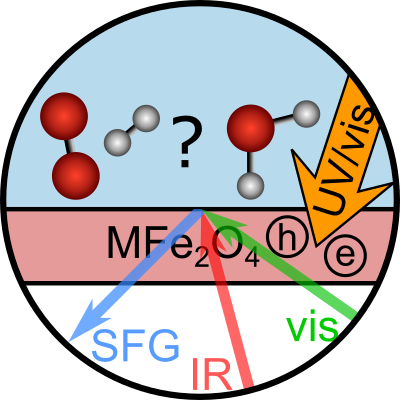
Backus, Ellen H. G.; Schaefer, Jan; Bonn, Mischa
Probing the Mineral–Water Interface with Nonlinear Optical Spectroscopy
Journal ArticleOpen AccessIn: Angewandte Chemie - International Edition, vol. 60, no. 19, pp. 10482–10501, 2020.
Abstract | Links | BibTeX | Tags: P11, pre-TACO
@article{Backus2020,
title = {Probing the Mineral–Water Interface with Nonlinear Optical Spectroscopy},
author = {Ellen H. G. Backus and Jan Schaefer and Mischa Bonn},
doi = {10.1002/anie.202003085},
year = {2020},
date = {2020-06-19},
urldate = {2020-06-19},
journal = {Angewandte Chemie - International Edition},
volume = {60},
number = {19},
pages = {10482--10501},
publisher = {Wiley},
abstract = {The interaction between minerals and water is manifold and complex: the mineral surface can be (de)protonated by water, thereby changing its charge; mineral ions dissolved into the aqueous phase screen the surface charges. Both factors affect the interaction with water. Intrinsically molecular-level processes and interactions govern macroscopic phenomena, such as flow-induced dissolution, wetting, and charging. This realization is increasingly prompting molecular-level studies of mineral–water interfaces. Here, we provide an overview of recent developments in surface-specific nonlinear spectroscopy techniques such as sum frequency and second harmonic generation (SFG/SHG), which can provide information about the molecular arrangement of the first few layers of water molecules at the mineral surface. The results illustrate the subtleties of both chemical and physical interactions between water and the mineral as well as the critical role of mineral dissolution and other ions in solution for determining those interactions.},
keywords = {P11, pre-TACO},
pubstate = {published},
tppubtype = {article}
}

Pollitt, Stephan; Truttmann, Vera; Haunold, Thomas; Garcia, Clara; Olszewski, Wojciech; Llorca, Jordi; é, Noelia Barrab; Rupprechter, Günther
Journal ArticleOpen AccessIn: ACS Catalysis, vol. 10, no. 11, pp. 6144–6148, 2020.
Abstract | Links | BibTeX | Tags: P08, pre-TACO
@article{Pollitt2020,
title = {The Dynamic Structure of Au_{38}(SR)_{24} Nanoclusters Supported on CeO_{2} upon Pretreatment and CO Oxidation},
author = {Stephan Pollitt and Vera Truttmann and Thomas Haunold and Clara Garcia and Wojciech Olszewski and Jordi Llorca and Noelia Barrab é and Günther Rupprechter},
doi = {10.1021/acscatal.0c01621},
year = {2020},
date = {2020-05-08},
urldate = {2020-05-08},
journal = {ACS Catalysis},
volume = {10},
number = {11},
pages = {6144--6148},
publisher = {American Chemical Society (ACS)},
abstract = {Atomically precise thiolate protected Au nanoclusters Au38}(SC_{2}H_{4}Ph)_{24} on CeO_{2} were used for in-situ (operando) extended X-ray absorption fine structure/diffuse reflectance infrared fourier transform spectroscopy and ex situ scanning transmission electron microscopy–high-angle annular dark-field imaging/X-ray photoelectron spectroscopy studies monitoring cluster structure changes induced by activation (ligand removal) and CO oxidation. Oxidative pretreatment at 150 °C “collapsed” the clusters’ ligand shell, oxidizing the hydrocarbon backbone, but the S remaining on Au acted as poison. Oxidation at 250 °C produced bare Au surfaces by removing S which migrated to the support (forming Au^{+}-S), leading to highest activity. During reaction, structural changes occurred via CO-induced Au and O-induced S migration to the support. The results reveal the dynamics of nanocluster catalysts and the underlying cluster chemistry.},
keywords = {P08, pre-TACO},
pubstate = {published},
tppubtype = {article}
}
